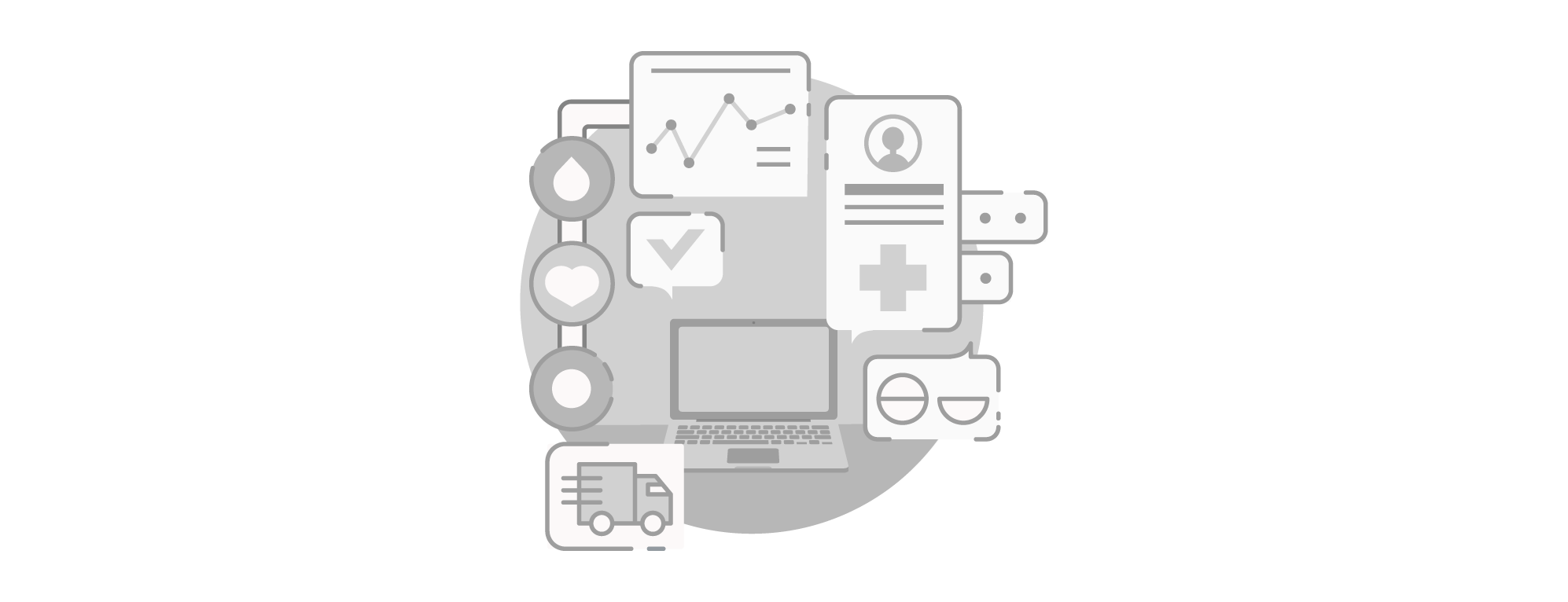Insights
what are blockchains and how are they related to genomics?
5 min read. Johan Bernal
Johan Bernal
Johan Bernal
Marketing SpecialistThe World Economic Forum mentioned that the 4th digital revolution refers to the union between the physical, digital, and biological fields. From this point of view, genomics (a new kind of medicine that deals with a deeper analysis of DNA) represents a great potential to materialize this evolution in humanity.
If talking about genetic modification has always been seen as something futuristic, what if we were to mention that thanks to new technologies, humans could live many years longer and put an end to diseases such as cancer?
For that reason, we explain everything about this new medical discipline and the practices that allow the union between technology and biology that will save many lives.
What is genomics?
According to Lawrence C. Brody, Ph.D. for the National Human Genome Research Institute: "Genomics refers to the study of the complete genome of all the genes found in an organism. Whereas genetics studies only genes individually."
Understanding the difference between genetics and genomics, it is now possible to perceive the complexity and the evolution of this second field. It is the fundamental reason why several scientists have decided to implement innovative technological solutions and tools to address research in this new field of medicine.
Under this paradigm, genomics specialists have currently focused their efforts on data analysis, to unravel various biological issues that trouble human beings, such as the formation and treatment of orphan diseases and the deeper incidences on genetics and DNA in general.
Thanks to these studies, some main unknowns have been clarified, such as that the DNA datasets configured for family reference consist of 50% genetic similarity, derived from the mother; 50% from the father; and 25% for the grandparents. Not as was believed years ago that the grandparents contributed with the majority of the genetic load skipping a generation.
Data-Driven Economy
The current paradigm determines that data has gained high relevance worldwide, especially in the economic field. It is similar to the role of data in genomics. Hence, blockchain solutions (commonly related to economics) are today being increasing in genomics.
But how does blockchain relate to genomics?

This connection can be evidenced in the called blockchain medical prescriptions. These employ digital data systems to prevent and regulate the self-prescription of medicines (especially antibiotics) and apocryphal or counterfeit prescriptions.
These blockchain systems, which have already begun to standardize in the world, have chosen to offer cryptographic money in exchange for biodata, with which clinical trials try to impact humanity through the following functions:
Give identity or associate a biosample (blood, urine, or saliva through a tube) with a serial number or barcode, assign a token, and host it in a wallet or cryptographic purse.
Generate traceability to the sample and provide a unique key to its owner to assign medical permits for specialists to use this information for clinical research.
The novelty of these new technologies is that they aim to change the methods of governance that revolve around the permissions corresponding to patients' genomic data worldwide.
Before the blockchain, the biological sample had to be sent to a laboratory through a company (which functioned as a Data Broker) and, this company arbitrarily acquired full rights to the genomic data (without giving rights to the patient). So what these new solutions avoid the existence of this intermediary that takes over the rights or resells the data.
The person who wants to participate in this procedure will send his saliva sample (containing his RNA AND DNA data). This test should be uploaded to the system, and there the blockchain token will be generated that will provide the permissions (but not give them away) to be used in clinical studies.
Where does the trend come from?

The idea came from 'Delegation Tokens' that are codes used to assign types of information. However, in the case of Bio Tokens, these are biological information and are not assigned, just "loaned" for a specific time. This, based on the European Data Protection Law (GDPR) in which 3 fundamental rights prevail:
1) Right to be forgotten.
2) The right to know where the information is.
3) Right to portability.
Thus arise the Bio NFT, biological versions of the NFT 'non-fungible tokens', which are digital assets that have the particularity of not being interchangeable with each other and that function as a "proof of authenticity and ownership" within the digital world.
These Bio NFTs work with a Smart Contract, which allows knowing the address of the permission of use holder, so the traceability of the location of the data is very efficient. All this, supported by the privacy laws of the case, is called Legal tech.
What are the citizen incentives of these "bio-blockchains"?
1) Personal incentive: Aimed at the 7% of the world's population (500 million people) who have health problems associated with their genome. This solution is quite useful to study orphan illnesses through data analysis. The remuneration is not in money cash, but in kind (health or quality of life).
2) Economic incentive: This is about money offered to users for completing surveys, diets, or health questionnaires, as compensation for the time invested in filling in their information.
Before blockchain, companies or those in charge of medical studies paid their users with deposits or gift vouchers, which was problematic due to the tax formalities associated with the payment. This was solved with the implementation of the wallet mentioned above, which accounts for digital financial movements and the origin of the funds.
But have any findings been evidenced?

So far, the implementation of blockchain has made it possible to generate specific and personal products from data obtained in studies for the fight against cancer and in those related to the treatment for COVID-19.
Among the success stories taken into account in these studies, a case of terminal cancer cured with the design of a personal vaccine generated by scientists James Allison and Tasuku Honjo stands out.
Throughout his career, Allison studied a protein called CTLA-4, which functions as a brake that prevents T lymphocytes (a type of white blood cell) from identifying and fighting certain cells; this allowed him to understand that eliminating this barrier could make the defenses attack tumors. And from that idea with Honjo, they devoted their lives to designing the vaccine that won a Nobel Prize in 2018.
Blockchain developments adapted to biology have also made it possible, among other things, to find people's family trees and have recently helped public health through the "COVID-19 Passenger Passports".
These documents were created to combat the fraud present in the certification required for international travelers. This issue tarnishes the reputation of the laboratories in charge and causes risks to people planning to travel to other territories.
This innovative solution works through a scannable and printable QR code (or downloadable in PDF format), which allows transparency, traceability, and cybersecurity in the process of issuing and monitoring the passport. And to date has 40,000 high-tech covid certificates.
Takeaways:
Technology has made it possible to optimize different processes throughout history and make them easier. However, its priority should always be to help the welfare of humanity.
In recent years, data-driven technology has been able to change people's lives in increasingly specific ways. Because of this, in the future, there will be much more data available for research, which will allow us to be better prepared for diseases, which will mean more lives saved and for some, a better quality of life.
Written by Johan Bernal
 Johan Bernal
Johan Bernal
Johan is a creative professional skilled in developing and executing effective marketing strategies. Their expertise in market analysis and campaign management drives brand awareness and customer engagement.
